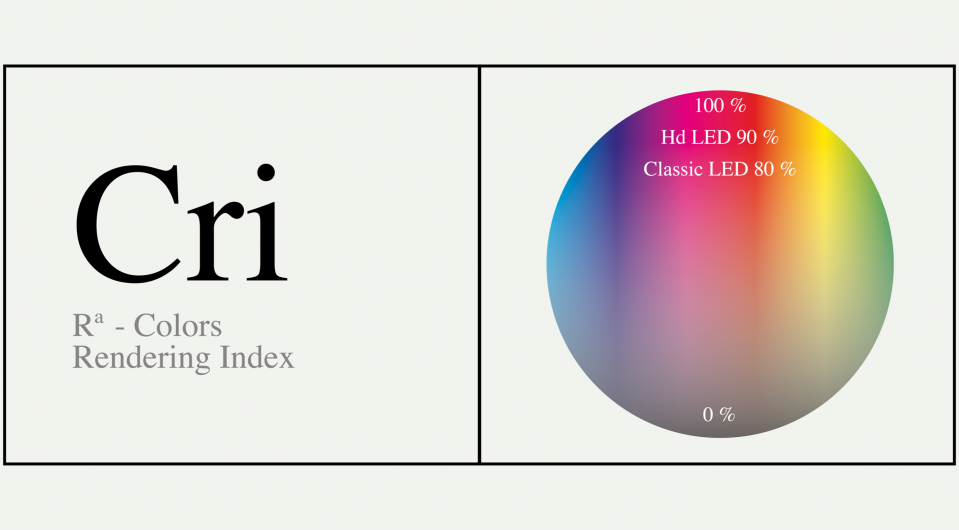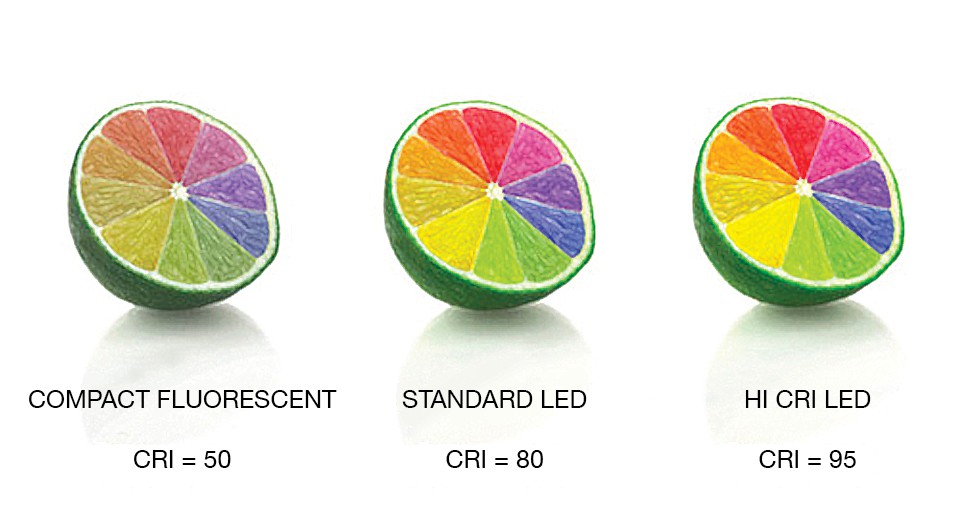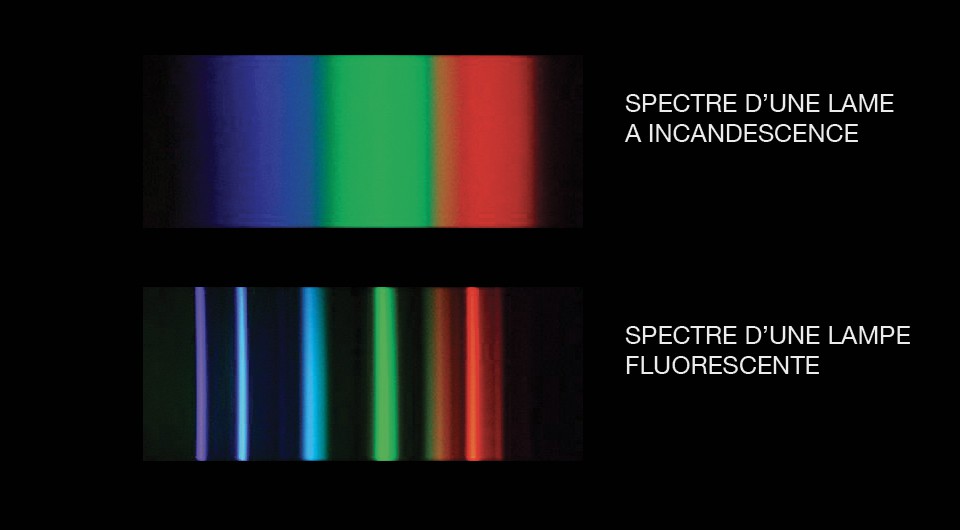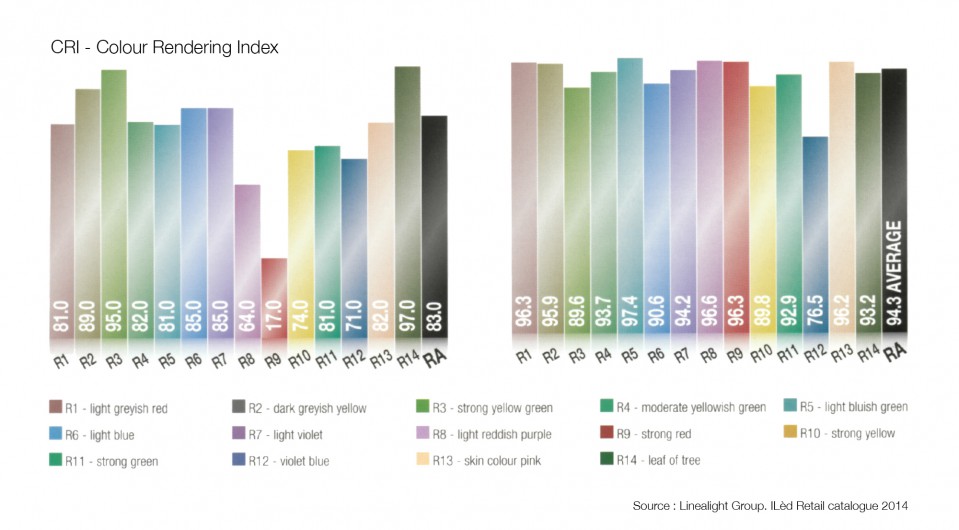COLOR RENDERING INDEX (CRI)
What is the color rendering index ?
The color rendering index (CRI) is the capacity of a light to make us distinguish all the visible colors by human eyes. Better is the quality of the light, higher is the color rendering index.
Daylight offers a CRI of 100, and that for every color temperature of the day. It is use as base for the calculation of the CRI of the other light sources. Its bright spectre consists of colors of the rainbow (see the white light topic) which come in a homogeneous way. Such a light is capable, thanks to its very complete spectre, to send back to the human eye all the various colors.
The artificial light has not the same spectre as the natural light. The latter depends on the technology of lighting. Fluorescent or halogen lamps for example have a CRI between 70 and 90. Their spectres of colors contain peaks and lacks on certain colors. Certain LED " HI CRI " have a reaching CRI of 98.
To estimate the CRI of a lamp, we use a pallet of 8 colors (R1 to R8) where is added 7 other colors (R9 to R15) for the test on the LEDs. The average of all these color give the final CRI.
The quality of the CRI is a mattering criterion to choose light sources. In medicine, in jewelry, in museums, etc, the CRI must be close to 100 to differentiate all the nuances of colors. Whereas in a parking lot or in a zone of storage, this one can be lower.












